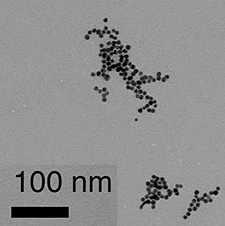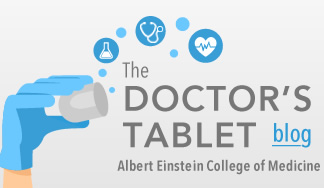FULL STORY
New Technology Shows Promise Against Resistant Staph Infections
April 30, 2009 — (BRONX, NY) — Scientists at Albert Einstein College of Medicine of Yeshiva University have combined their revolutionary new drug-delivery system with a powerful antimicrobial agent to treat potentially deadly drug-resistant staph infections in mice. The study is published this month in the online version of the Journal of Investigative Dermatology.

Joshua Nosanchuk, M.D.; Joel M. Friedman, M.D., Ph.D.; Adam Friedman, M.D.Staphylococcus aureus bacteria cause the majority of superficial and invasive skin infections. Prior studies and government statistics indicate that staph infections result in more than 11 million outpatient and emergency room visits and 464,000 hospital admissions annually in the U.S. Staph bacteria are also notorious for infecting patients while they're in the hospital for other reasons. The infections can be deadly if the bacteria invade the bloodstream, heart, lungs, or urinary tract.
Drug-resistant strains of staph are on the rise. According to the Centers for Disease Control and Prevention, approximately 94,000 cases of invasive, methicillin-resistant Staphylococcus aureus, or MRSA infections, occur each year, resulting in 19,000 deaths.
"We've seen drug-resistant strains of staph in hospitals for decades, but now it's increasing in the community, where it once was rare. In some places, 50 percent or more of community-acquired staph infections are resistant to first-line antibiotics. Thus, there's an urgent need for new medications," says Joshua D. Nosanchuk, M.D., associate professor in the departments of medicine and microbiology & immunology at Einstein, and one of the senior authors of the study.
The drug-delivery system, developed by Einstein scientists, consists of biocompatible nanoparticles—each smaller than a grain of pollen—that can carry tiny payloads of various drugs or other medically useful substances and release them in a controlled and sustained manner. In this study, the nanoparticles were designed to transport and slowly release nitric oxide (NO) gas.
The nanoparticle technology was developed by Joel M. Friedman, M.D., Ph.D., professor of physiology & biophysics and of medicine at Einstein, and his son, Adam Friedman, M.D., an incoming chief resident in the division of dermatology at Einstein, co-seniors authors of the study with Dr. Nosanchuk.

This image of NO-releasing
nanoparticles was taken with a
transmission electron microscope and
shows that the particles are about 10
nanometers (nm) in diameter, each
smaller than a grain of pollen.NO is produced by many cells throughout the body and has several important biological functions including killing bacteria, healing wounds, and increasing blood flow by dilating blood vessels. But harnessing NO's therapeutic potential has proven difficult. "The problem is that nitric oxide is very short-lived and, until now, methods to deliver it to targeted tissues in the proper dosages have proven elusive," says Dr. Joel Friedman.
"As the particles take on water, they loosen up and the nitric oxide slowly trickles out, releasing specific amounts of the gas—which is exactly what happens in your body," says Dr. Friedman.
To test the effect of the nanoparticles on staph infection, the Friedmans collaborated with Dr. Nosanchuk's laboratory, which determined the proper dosages and carried out the present study.
In the study, mice whose skin was infected with MRSA were treated topically with NO-containing nanoparticles or with nanoparticles devoid of NO. A third group received no treatment at all.
The NO-containing nanoparticles proved highly effective. After seven days, infected wounds in the group treated with the NO-containing nanoparticles were significantly improved and smaller than lesions in the two other groups. In addition, bacterial counts were significantly lower in the NO-treated group compared with the other groups, and the NO-treated group showed evidence of accelerated wound healing both visually and microscopically.
After further refining their nanoparticles, the Einstein team plans to test them in clinical trials against MRSA and other infections. Dr. Friedman is confident that the therapy will be safe for human use. "To date there have been no indications of toxicity in any of the numerous animal studies," he says.
"To have a topical medication for staph that you don't have to take orally and systemically would revolutionize the way we take care of our patients," says Dr. Nosanchuk.
In another potential use, Einstein scientists at the annual meeting of the American Urological Association earlier this week reported that nanoparticles carrying either NO or the drug tadalafil (Cialis) show promise as a topical treatment for erectile dysfunction.
The paper, "Antimicrobial and Healing Efficacy of Sustained Release Nitric Oxide Nanoparticles Against Staphylococcus Aureus Skin Infection," was published April 23, 2009, in the online version of the Journal of Investigative Dermatology. Dr. Nosanchuk is the corresponding author. Lead authors of the study are Luis R. Martinez, Ph.D., an Einstein research associate, and George Han, an M.D-Ph.D. candidate at Einstein. Other Einstein contributors are Manju Chacko, Mircea Radu Mihu, Marc Jacobson, and Phil Gialanella.
Einstein has filed patent applications covering the nanoparticles and their pharmacological applications for delivering nitric oxide and other compounds.
Other Top Stories
9/11 World Trade Center Exposure Linked to Heart Disease Among NYC Firefighters
On Becoming a Physician: New Einstein Students Receive White Coats and Stethoscopes
Novel Therapy for Acute Migraine Shows Promise in Phase 3 Clinical Trial
First Complete Wiring Diagram of an Animal's Nervous System
Multimillion Dollar NIH Grant to Help Reduce Opioid Use & Get Care to People Who Need It
NIH Grant Funds $23 Million Study of Diseases Affecting People Living with HIV
New TAILORx Data Guides Adjuvant Therapy in Younger Breast Cancer Patients
Einstein Celebrates Its 61st Commencement
Bolstering Biopsies: Testing Patients' Individual Cells to Guide Treatment



Tablet Blog